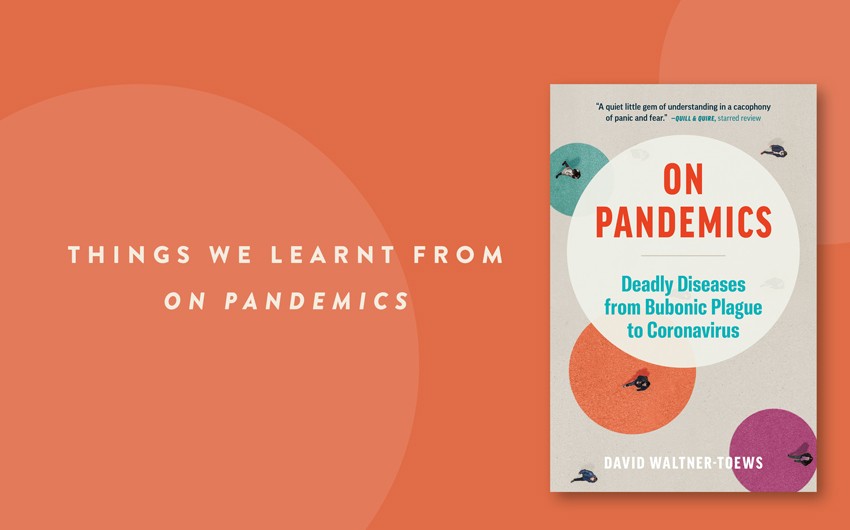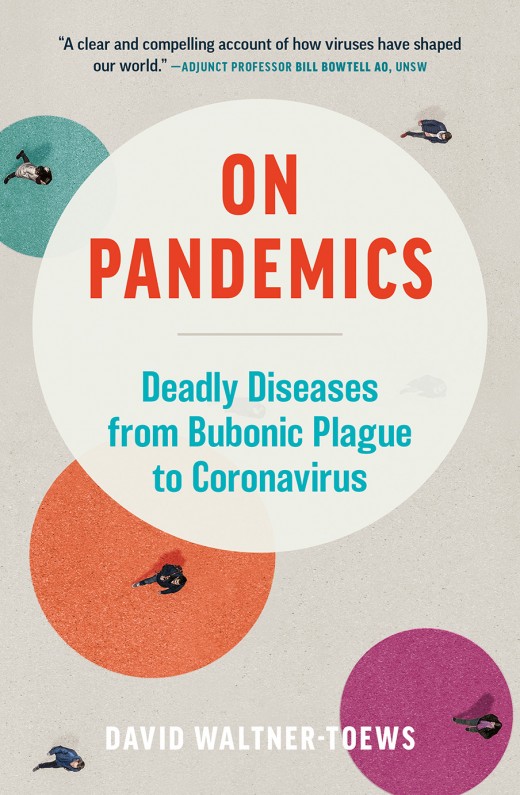News

News >
8 things we learnt from On Pandemics
A leading epidemiologist profiles deadly diseases from bubonic plague to coronavirus.
Misinformation has been running rampant during the current coronavirus crisis. Get the truth behind COVID-19 and other pandemics throughout history in On Pandemics: Deadly Diseases from Bubonic Plague to Coronavirus by trusted epidemiologist and veterinarian David Waltner-Toews. Here are some things we learnt.
- COVID-19, SARS and influenza belong to a very large extended family of diseases that are shared among other animals and people. They are called zoonotic diseases, or ‘zoonoses’ (pronounced zoó-uh-no-sees), for short. Most of the infectious diseases people have ever cared about have come to us from other animals.
- SARS was never officially declared a pandemic. Before 2020, the only WHO-declared pandemics since 1900 were in 1918, 1958, 1968 and 2009. All were influenza, and all our guidelines for pandemic response are based on influenza.
- In 2017, WHO published the ‘Pandemic influenza risk management’ guide. This document assumes that whenever we are not in a pandemic, we are between pandemics, as we are between Ice Ages. There is no non-pandemic phase in our future. We have always lived between pandemics and we always will.
- If we understand just a little more about the animals we share this planet with and the micro-organisms that they carry around, both those that we eat and those that will eat us, we might even begin to understand ourselves. Ebola, Marburg, Chagas, SARS-COV and SARS-COV-2 emerged in part because people invaded new territories where other animals and their microbes have lived in some rough kind of harmony for millennia.
- Globally, there are about eleven hundred species of bats – 20 to 25 per cent of all mammals. Bats of various species are home to a variety of interesting viruses, including Hendra, Nipah and, as we subsequently discovered, SARS-COV and SARS-COV-2, as well as those that cause Ebola and Marburg hemorrhagic fevers in Africa.
- In 2018 and 2019, more than 200 million pigs in China died from – or were killed to ‘stamp out’ – African swine fever. That was about half of the pigs in China and a quarter of all the pigs in the world.
- The Black Death killed off at least a third of medieval Europe – tens of millions of people – in just a few years in the mid-fourteenth century, even as it killed tens of millions of people in Asia and the Middle East. The deaths of millions of farm labourers led to huge economic and cultural changes – peasants’ revolts, the collapse of feudalism, the rise of capitalism and a loss of power by the church all happened in its wake.
- For those who wish to see a resilient, just, sustainable future, the destruction that occurs in the midst of a pandemic opens a small window in which to assert ourselves, to organise and to act creatively. We cannot miss this opportunity.
On Pandemics is out now.
Share this post
About the author
David Waltner-Toews is a renowned Canadian epidemiologist, veterinarian and specialist in food and waterborne diseases, zoonoses and ecosystem health. He is professor emeritus at the University of Guelph, and has written more than twenty books, including poetry, short stories and nonfiction.
More about David Waltner-Toews




